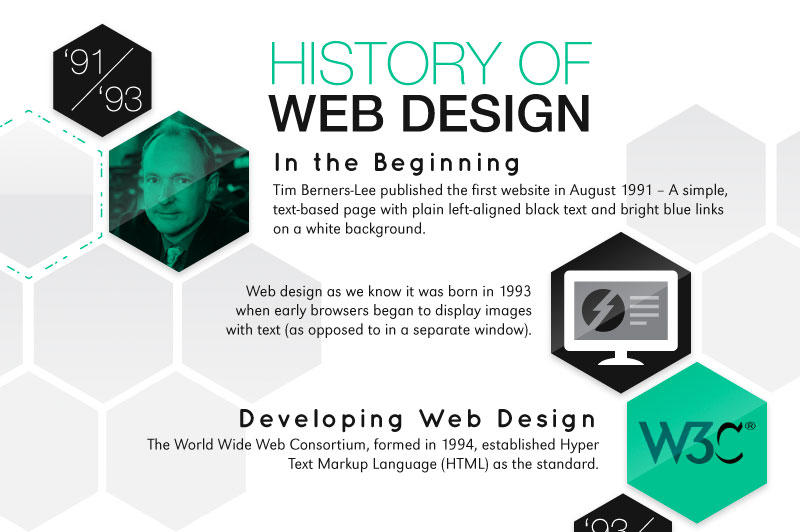The Development Of Website Design: Then And Now
The Development Of Website Design: Then And Now
Blog Article
https://www.makeuseof.com/best-ways-digital-marketers-use-google-workspace/ -Kinney Trolle
In the past, sites were basic and concentrated on info. Navigation was direct, and style was for desktop computers. Now, individual experience is crucial. Data guides styles for easy navigation. Responsive designs fit various tools. visit the next web page , dark setting decreases pressure, and minimal menus boost navigating. Interactive attributes engage customers, and bold visuals stick out. AI assimilation increases involvement. See exactly how style has actually advanced to enhance your on the internet journey.
Very Early Days of Website Design
In the very early days of web design, simplicity preponderated. Sites were standard, with restricted shades, font styles, and designs. The focus was on supplying information as opposed to flashy visuals. Customers accessed the net with sluggish dial-up links, so speed and functionality were essential.
Navigation menus were straightforward, typically situated on top or side of the web page. Web sites were designed for desktop, as mobile surfing had not been yet prevalent. Material was king, and designers focused on easy readability over complex style aspects.
HTML was the key coding language made use of, and developers had to function within its restraints. Computer animations and interactive features were very little compared to today's standards. Web sites were fixed, with little dynamic web content or customized user experiences.
Surge of User-Focused Design
With the evolution of website layout, a shift towards user-focused style principles has become increasingly prominent. Today, developing sites that prioritize individual experience is critical for involving site visitors and accomplishing service goals. User-focused design includes recognizing the demands, choices, and habits of your target audience to tailor the internet site's design, content, and features as necessary.
Designers now conduct complete research, such as customer studies and usability screening, to collect insights and comments straight from users. This data-driven strategy aids in creating intuitive navigating, clear calls-to-action, and visually attractive interfaces that reverberate with visitors. By positioning the individual at the center of the design process, internet sites can provide a more customized and pleasurable experience.
Responsive style has actually also emerged as a key element of user-focused layout, making certain that websites are maximized for different tools and screen dimensions. This adaptability improves ease of access and use, satisfying the varied means users connect with web sites today. In essence, the increase of user-focused design represents a shift towards creating electronic experiences that focus on the needs and assumptions of the end individual.
Modern Trends in Website Design
Check out the most up to date trends forming web design today. One noticeable fad is dark mode style, using a streamlined and modern-day appearance while decreasing eye strain in low-light atmospheres. An additional essential trend is minimal navigating, simplifying food selections and improving user experience by focusing on essential elements. Including micro-interactions, such as computer animated buttons or scrolling results, can produce a much more interesting and interactive site. Receptive design continues to be essential, guaranteeing smooth individual experiences throughout numerous gadgets. Additionally, making use of strong typography and asymmetrical formats can add aesthetic rate of interest and draw attention to certain material.
Incorporating AI innovation, like chatbots for client assistance or tailored suggestions, boosts individual interaction and simplifies processes. Accessibility has likewise become a substantial fad, with developers prioritizing inclusive design methods to satisfy varied customer demands. Accepting sustainability by optimizing internet site efficiency for speed and efficiency is one more arising pattern in website design. Working together with individual responses and data analytics to iterate and boost style continuously is essential for remaining pertinent in the ever-evolving electronic landscape. By embracing these modern-day trends, you can develop an aesthetically attractive, user-friendly web site that reverberates with your target market.
Final thought
As you assess the development of web site design from the early days to currently, you can see how user-focused style has come to be the driving force behind modern-day patterns.
Welcome the trip of change and adaptation in web design, always maintaining the customer experience at the forefront.
Tippingpointdigital
Keep current with the most recent trends and technologies, and never ever stop developing your method to develop aesthetically spectacular and user-friendly internet sites.
Develop, adapt, and develop - the future of website design is in your hands.
